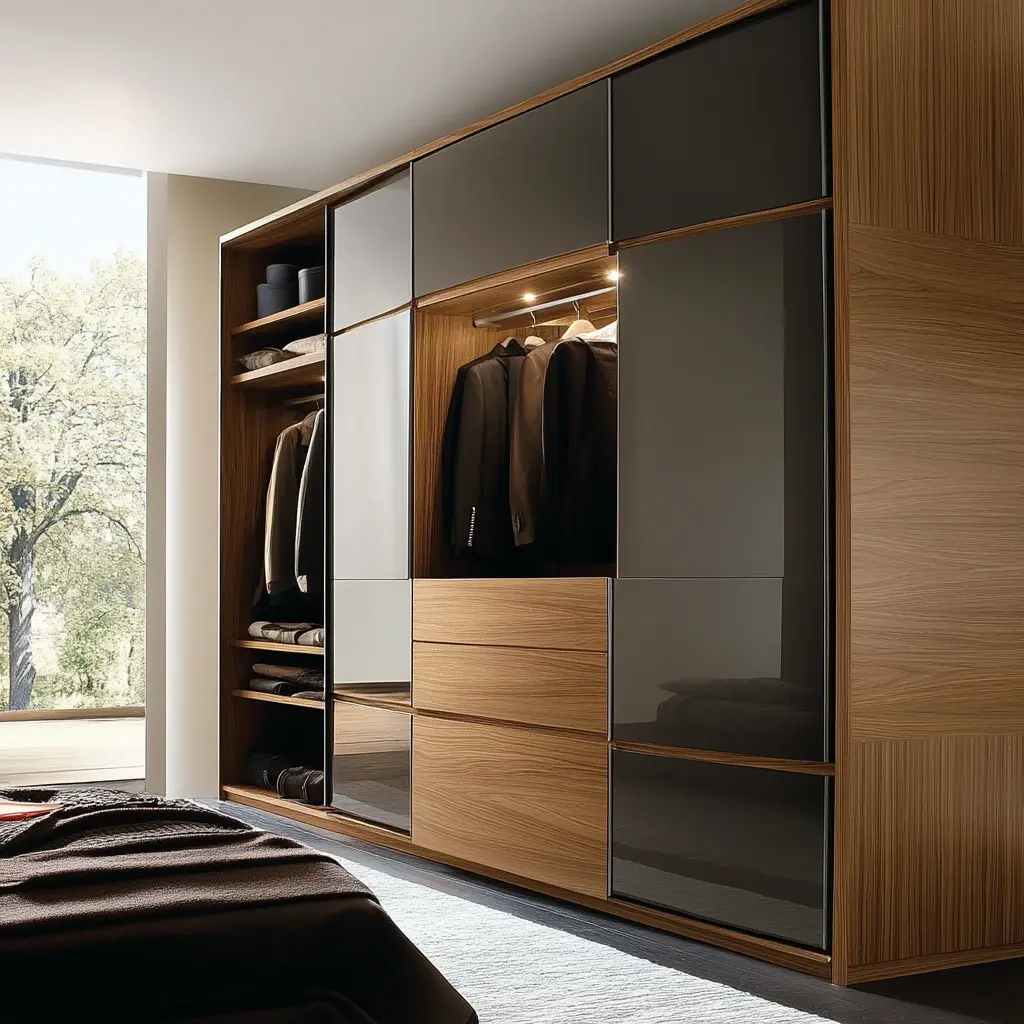Contact Us
Get in Touch

There are many fundamentals that guide wardrobe design- the main one being how user-friendly it is. One factor that must precede wardrobe interior design is an understanding of ergonomics.
What is ergonomics and how does it impact wardrobe design?
In general, ergonomics refers to the science of study of people and the items they use as well as the locations they frequent. With adequate planning and this basic understanding of the user, one can manipulate items and locations frequented in daily routine to make it quicker, safer and more comfortable for the person of interest.
In interior design, ergonomics is a frequently discussed topic- kitchen ergonomics so that a person can prepare a meal without difficulty, space planning in the blueprint of a house to make a room feel spacious, the type of sofa that would suit the family- every single aspect with good interior designers is designed keeping the end user in mind.
Pertaining to the bedroom and in particular, to wardrobe design, there are several aspects to consider to make it ergonomic. The ergonomics of wardrobe design is highly dependent on who the user is- their age, gender, height, physical condition, preferences and dominant hand.
The Principles of Ergonomics & how it influences Wardrobe Design with clear examples are as follows:
Maintenance of a Neutral Posture
When the user’s body is in balance, they are said to be in a neutral posture. A state of imbalance constitutes an awkward posture and must be avoided at all costs for routinely performed tasks.
Example: Designing ergonomic wardrobe handle designs to direct opening and closing motions for the wardrobe door work on the principle of maintaining a neutral posture of the digits, wrists and forearms.
Reduction of need for Excessive Force, Motion and Exposure to Increased Vibration
For the use of a product, the user must not have to apply excess force or motion and should not receive increased vibration. These factors may have a negative impact on the individual’s long-term health.
Example: Struggling to open up a heavy drawer in a wardrobe or a rusty wardrobe door is rather unpleasant- and can be detrimental to health in the long-term. Consider sliding wardrobe door design and push-to-open drawers for ease and reduction in need for excessive force and motion.
Items should be readily Accessible
Things for daily use should be placed within accessible reach making the reach and use to the product easy.
Example: In a wardrobe, items of routine use like daily wear clothes and undergarments must be allocated within zones that are easy to reach. Using the right wardrobe accessories to organise them within this zone is extremely helpful. The use of lofts or bottom storage must be reserved for items that are used only occasionally like clothing for special events, seasonal clothes or luggages.
Maximal operation within the Hand-Shake Zone
Operating within one’s comfort zone always yields the best results. Similarly, a person’s hand-shake zone is considered to be their power zone and it falls between the middle of a person’s chest to the middle of their thigh. If any effort needs to be made, it is best to operate within this zone to reduce strain.
Example: Heavy items like a jewellery box or a master bedroom wardrobe with in-built foldable dressing table or ironing stand must be placed within this zone for a user to allow for easy operation.
Reduction of Static Load
The position that a person maintains for an extended period of time contributes to increased static load which results in fatigue.
Example: When a wardrobe is being designed for an individual who is 5 feet tall, it is advised to keep the commonly used clothing items on shelves or rails that can be accessed without bending down or reaching up for. Same goes for the width of the shelf- the user shouldn’t have to bend in an awkward posture to get an item from the back of the shelf. While this entails for a very small portion of the day, it is done on a daily basis while deciding on the outfit of the day, for a long-term period of time.
Pressure Point Minimisation
Over the course of usage of an item, the place where the object contacts the body of the user is the pressure point. Excessive pressure points have a tendency to result in contact stress and thereby, must be reduced.
Example: For the opening and closure of a wardrobe or its drawers, it is important to reduce the area of pressure points. Maximum pressure points will be activated in wardrobe handle designs wherein a complete grip is needed for the opening while minimal pressure point activation is observed in push-to-open or electric opening varieties.
Good Lighting for Illumination
To reduce strain on one’s eyes, it is advised to have good illumination within all operating spaces.
Example: Invest in good wardrobe lighting sources that allows you to easily visualise all the contents of the cupboard unit.
Keep in mind all of these tips and their applications when you finalise your wardrobe design! To know more Reach out to us at info@agnikone.com. With showrooms in Trivandrum, Kollam, Cherthala, Kochi, and Thrissur, we proudly serve customers across Kerala. Contact us to start your transformation today.
Get in Touch